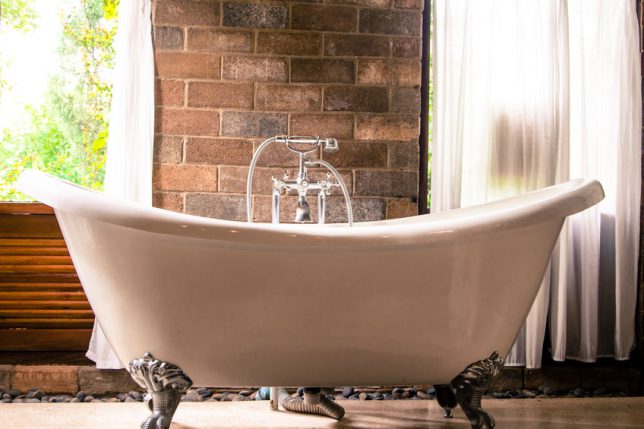
Whether a Queen Anne Victorian, a Craftsman bungalow or a New England saltbox, historic homes need special care and attention. When you have a historic home, you are more than a homeowner; you are the guardian of the house. Your family will be leaving its imprint on the history of the home, so any alterations or improvements should be thoughtfully planned and executed in order to protect its integrity. Some things to consider before beginning any work on a historic home include:
Restoration vs. rehabilitation: One of the biggest questions to answer is whether to restore or rehabilitate the home.
- Restoration means returning the interior and exterior appearance to a particular date or time period to help interpret its history. It could be when the house was built, or when a significant event took place there. Strict restorations that eliminate everything not present during the period chosen are uncommon as most restorations include modern conveniences such as plumbing and electricity and retain later additions that add to the home’s history.
- Rehabilitation means making the house functional for a modern household while retaining and preserving important historic and architectural features. A rehab project may also incorporate alternative materials, rather than duplicating the original.
Whether you restore or rehabilitate will affect costs and the amount of time that your project will take, as well as how much work you’ll need to leave to the professionals. Before picking a path, assess the home’s historic significance, architecture, and its present condition. Also think about your family’s lifestyle and the needs your home must accommodate.
Restrictions: Historic district designations, local building codes, property insurance, and other regulatory or financial considerations will have an impact on the level of restoration vs. rehabilitation.
Adding and removing: Inspect any additions and work that is not original. If it’s of good quality and workmanship, even if the style or materials differ, then it likely adds value to the home. Poorly designed or executed alterations, especially those that obscure or attempt to alter the home’s time period can be removed. Pay attention to scale, massing and dimensions, and use materials, textures and colors that are similar to the existing structure.
When adding to a historic home, a “sympathetic” addition that resembles the home’s architecture should not pretend to be original. You do want to be able to tell additions apart from the original so that the house’s history is apparent.
Raw materials: One of the unique aspects of historic homes is the raw materials that were used to build the home — resources that are only available today at great expense, if they can be had at all. The quality of the wood, especially, is difficult, if not impossible to replicate. Salvaging, repurposing, repairing and refinishing doors, moldings, window sashes and paneling will go far to preserve the home’s original character.
Custom vs. standard: You will find that your historic home will probably require custom fittings and fixtures. Standard, off-the-shelf items such as curtains and doors are not likely to fit. Ceilings tend to be higher and ventilation and circulation were part of the design. You will also probably encounter systems that use technology from another era.
Craftsmanship: The level of craftsmanship found in a historic home, even a small one, is not often paralleled today. For this reason, finding specialized tradespeople is so important.
Details: It’s the details of your historic home that infuse it with charm and individuality. Wavy glass at the windows, the odd nooks and crannies, and original tile or woodwork are what set these homes apart from today’s more standardized buildings. Take care to preserve these quirks that make the home memorable.
The results of restoring a historic home are worth the effort and expense knowing that the character, charm, beauty and solidity of the house have been preserved for another generation.
Choose a contractor carefully.
For an historic home restoration that will add value and preserve your home’s authentic character, it’s important to work with a contractor who has the right experience. To be find a qualified contractor in your area, simply enter your ZIP code above. You’ll be put in touch with a contractor whose workmanship is warranted for a full five years, and whose licensing and insurance credentials have been thoroughly vetted.
Categories: General Contractors, Home Remodeling Renovation

